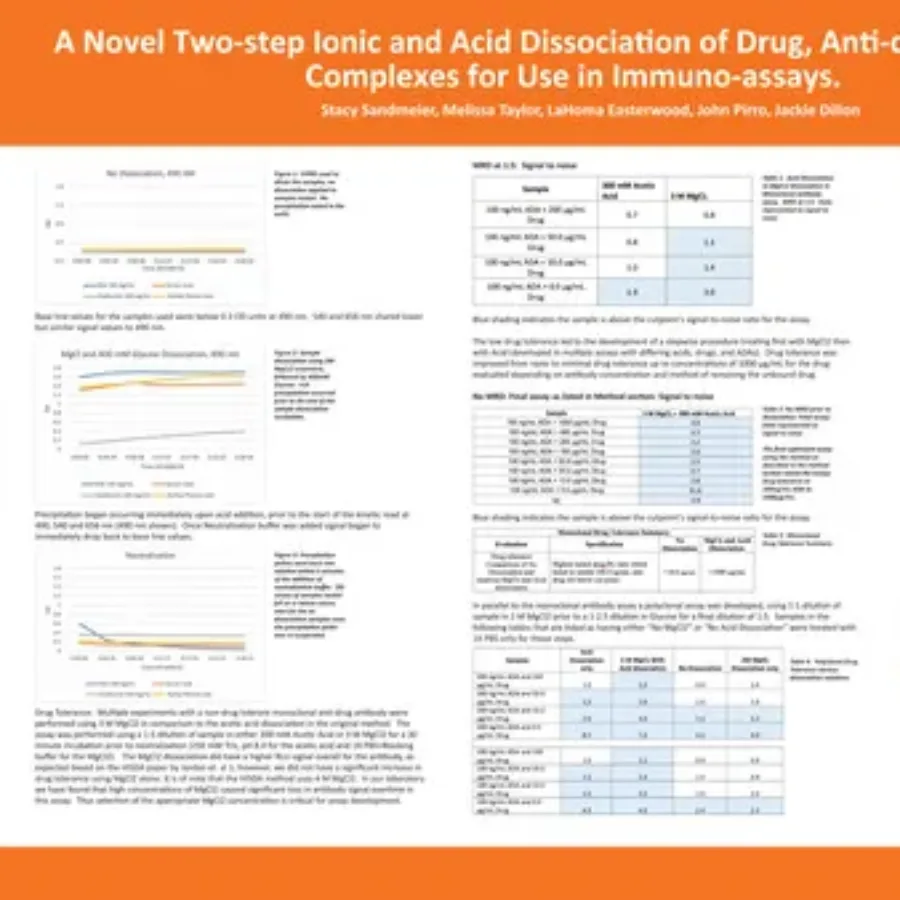 Blogs
Blogs
Flow Cytometry utilizes fluorescently labeled antibodies to detect specific biomarkers on the surface and within cells, and over the past few years, there has been a surge in reagents available for flow cytometry applications. Most of these have been developed using monoclonal antibodies raised in mice and conjugated to a range of fluorophores. However, there are still instances where suitable monoclonal antibody reagents/conjugates are not commercially available, and small-scale conjugations are not practical. In these instances, so-called indirect staining may be employed, where the binding of an unconjugated primary antibody is detected using a secondary anti-IgG antibody conjugate.
 Posters & Papers
Posters & Papers
Discover in this poster presented by Stacy Sandmeier at WRIB 2021 on the “A Novel Two-Step Ionic and Acid Dissociation od Drug/Anti-Drug Antibody Complexes for Use in Immunoassays”. Acide dissociation for ADA analysis _KCAS Bio_WRIB2021Download If you have any questions about these services…
 Blogs
Blogs
Measuring new biotherapeutic modalities such as cellular therapies are not well defined in the regulatory landscape. Currently no white papers or guidelines are available to help navigate the murky waters of quantifying new modalities, which is why the AAPS PK focus group has set a course toward providing the field…